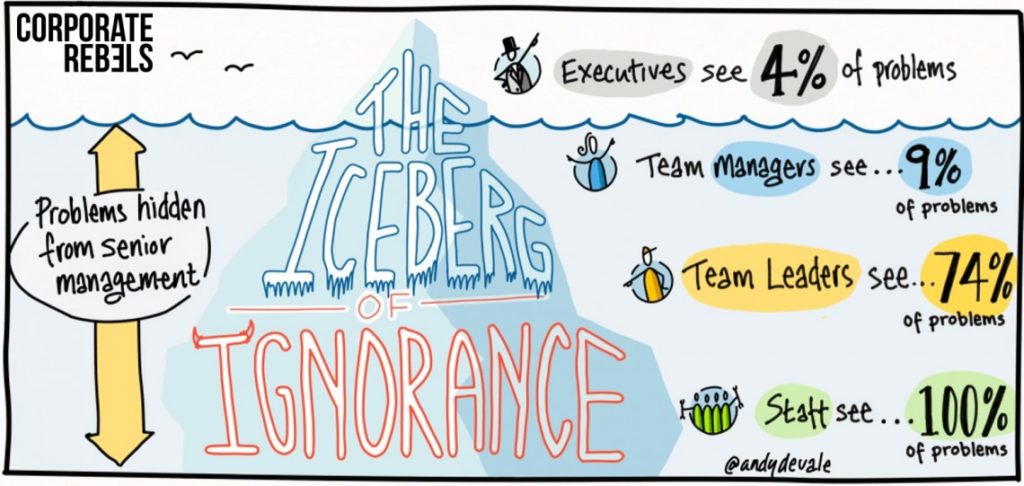2020 has been a relentless year, and for many company heads, innovation is on the back burner. However, for future success, innovation is essential. The good news is that innovation doesn’t need to be a huge effort to deliver powerful benefits to the business. Nor do leaders need to dream up all the ideas themselves.
With the right approach, leaders can create a culture that drives innovation within their company, according to Crispin Manners, founder, and CEO of Onva Consulting, and author of Engagement Multiplier’s “Kickstarting Innovation” On-Demand Survey.
On a recent webinar with our CEO, Stefan Wissenbach, Crispin offered practical advice to leaders who need to reinvigorate innovation within their organizations.
Innovation by increments
A key point Crispin drove home is that innovation doesn’t need to be a big, revolutionary event. It can also be evolutionary in nature.
“While there is always a place for the next big idea, the reality is that businesses move forward one step at a time,” he told the webinar audience. “Transformational changes can be delivered by very simple ideas, incremental ideas.”
In addition to being open to both incremental and transformational ideas, Crispin also offered three things leaders must do in order to build a successful culture of innovation:
- Be open to ideas – wherever they may come from
- Ensure leaders have the communication and self-awareness skills necessary to put employees in a creative frame of mind
- Develop and communicate a clear purpose for the organization.
Leadership needs to be open to ideas
What goes into a culture that drives innovation? First and foremost, leaders need to be receptive to the fact that great ideas will come from employees.
Fact is, chances are good your team has made significant innovations this year. Chances are also pretty good that according to Yoshida’s Iceberg of Ignorance, which posits that company executives are aware of only 4% of problems within the organization, while their staff has a clear view of 100% of the company’s issues.
“The best leaders are the ones who realize they don’t have all the answers,” notes Stefan Wissenbach. “They would do well to listen to listening to the people who are doing the job day in and day out.”
A smart organization needs to start with employees and enable the best ideas to filter through.

Ensure leaders have good communication skills that put people in a creative frame of mind.
Crispin made a particular point of emphasizing the crucial role of communication in fostering innovation, drawing a clear line between a leader’s communication style and the impact that style can have – for better or much worse – on their team.
“Leaders need to trigger a ‘friend’ reaction, rather than a foe reaction,” Crispin said, noting that our brains are sensing for these signals, all the time and unconsciously. “Triggering the wrong reaction with the first thing you say or the way you say it, will impact the ability of people to think creatively.”
The impact of poor communications that unwittingly send the wrong signal to people extends beyond shutting down one employee’s idea. More importantly, Crispin noted, a leader’s communication style also impacts their employees’ state of happiness.
“If there is poor communication on a continuous basis, what you’ll have is people who want to make a difference, but become progressively less and less happy in the workplace,” he pointed out. “Unhappy people will not bring forward their best ideas.”
The organization needs to have a really clear purpose.
Innovation is dependent upon the health of the company’s culture, and purpose is at its heart. By connecting people to the purpose, people become more receptive to doing things differently. They will buy-in, and bring great ideas forward in support of the shared purpose.
“People need to understand what the organization is trying to accomplish to achieve, the difference it’s trying to make in the world, the value it’s trying to deliver to its various stakeholders,” Crispin advised. “Based on that understanding, people are much more likely to bring forward ideas that will help achieve that purpose. They will bring ideas forward in the right context.”
Stefan and Crispin agreed that without taking the steps to develop a strong purpose and healthy culture, efforts to drive innovation are likely to fail.
“If the organization isn’t a listening organization, and leadership suddenly says ‘We want to hear your ideas,’ they will be met by a wall of disbelief,” Crispin commented.
Related webinar | Kickstarting Innovation: Get the Ideas Flowing
To take a deeper dive into creating a culture that drives innovation, tune in to the full webinar below:



